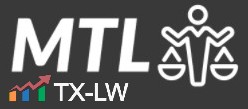Section 127 plans are often overlooked by both employers and employees as a valuable tax benefit.
Despite their potential advantages, many taxpayers fail to take advantage of these plans, which allow employers to deduct educational expenses for their employees, up to $5,250 per year, and employees to exclude these amounts from their taxable income.
This article aims to shed light on the benefits of Section 127 plans and to encourage their use as a tool for workforce development, as part of an overall tax plan.
Contents
The Complexities of Education Tax Rules
Without a Section 127 plan, the tax rules surrounding employer-provided education expenses can be confusing.
Employers can generally deduct these costs as “ordinary and necessary” business expenses if the education is related to their business. Employees can exclude these amounts from their taxable income as “working condition fringe” benefits if they meet the same criteria.
If the education is not related to the employer’s business, the employer is generally not entitled to a deduction, and the employee must include the expenses in their taxable income.
Court cases addressing the issue have determined that educational expenses that allow an employee to meet the minimum educational requirements for their current job, qualify for a promotion or salary increase, or qualify for a new position in a different trade or business do not qualify as a working condition fringe benefit. Taxpayers often struggle to apply these rules to their own situations.
About Section 127 Plans
Key features of Section 127 Plans:
- Educational assistance programs must be in writing, exclusively benefit employees, and meet certain eligibility, funding, and notification requirements.
- The program cannot discriminate in favor of highly compensated employees, and not more than 5% of the total educational assistance provided can be for shareholders or owners owning more than 5% of the employer’s stock, capital, or profits interest.
- Eligible employees cannot be given a choice between educational assistance and other remuneration that would be included in gross income.
- The term “educational assistance” includes employer-paid expenses for employee education, payments for principal or interest on qualified education loans (before January 1, 2026), and the provision of courses of instruction.
- Educational assistance does not include tools, supplies, meals, lodging, transportation, or courses involving sports, games, or hobbies.
- Self-employed individuals and partners in a partnership are considered employees for the purposes of Section 127.
- No deduction or credit is allowed for the employee under any other section of the tax code for amounts excluded under Section 127.
In summary, Section 127 allows employees to exclude from their gross income up to $5,250 of educational assistance provided by their employer, as long as the assistance is furnished under a program meeting specific requirements. This can be a valuable tax benefit for employees seeking to further their education and for employers looking to invest in their workforce.
Advantages of Section 127 Plans
Section 127 plans simplify this process by allowing employers to deduct expenses up to the limit even if the education does not qualify as a working condition fringe benefit. This can help employers avoid disputes with the IRS over the deductibility of specific education expenses.
Covered expenses under Section 127 plans include tuition, books, course supplies, and similar items for employees, including undergraduate and graduate courses. Personal living expenses and benefits related to recreational activities or tools and supplies retained by the employee are not covered.
Employers are not obligated to fund Section 127 plans every year, giving them the flexibility to contribute during financially strong years and withhold contributions during leaner years. Additionally, the administrative burden for employers is minimal, as plans can be structured as educational reimbursement plans or as funds provided directly to the educational institution or the student.
Section 127 Plans for a Better-Educated Workforce
In light of the increasing global competition for skilled workers, it is crucial for the U.S. to invest in its workforce. Strengthening and clarifying provisions like Section 127 can encourage employers to provide educational assistance to their employees.
The Treasury could provide a sample or model Section 127 plan that meets IRS requirements, making it simpler and more efficient for employers to implement these plans. Congress could also increase the amount of qualifying education expenses for Section 127 treatment, further incentivizing employers to invest in their employees’ education.
The Takeaway
Section 127 plans have the potential to significantly benefit both employers and employees while contributing to a better-educated workforce. By simplifying the implementation process and increasing the tax benefits associated with these plans, Congress and the Treasury can encourage more employers to take advantage of this valuable tax tool, ultimately benefitting the entire economy.
In 40 minutes, we'll teach you how to survive an IRS audit.
We'll explain how the IRS conducts audits and how to manage and close the audit.


